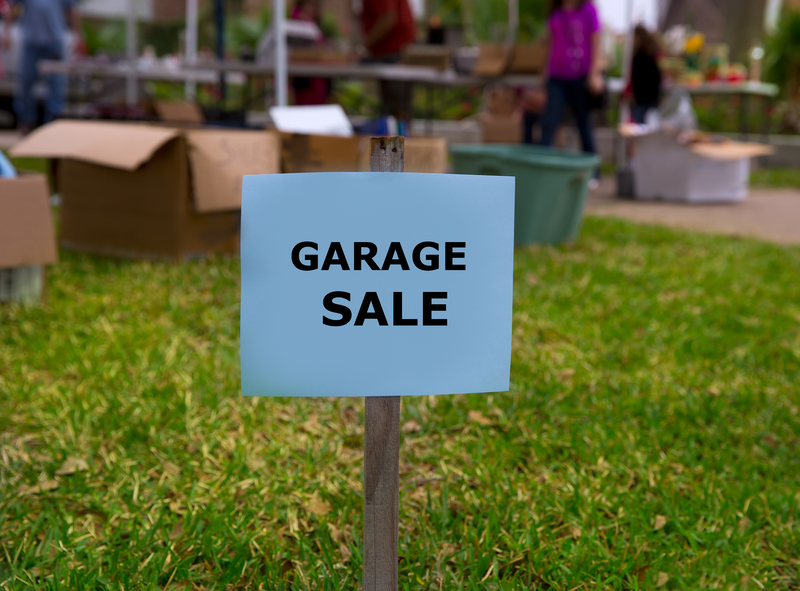Recognizing Waste That Is Regarded as Hazardous: A Comprehensive Guide
In our modern world, waste generation is inevitable. However, not all waste is created equal. Some types pose significant risks to human health and the environment. These are known as wastes that are regarded as hazardous. Recognizing hazardous waste is essential not only for compliance with laws and regulations but also for the protection of our communities, workplaces, and natural world. In this comprehensive article, we will explore how to identify hazardous waste, the various categories, the dangers associated with such waste, and best practices for managing it effectively.
Understanding the Concept: What Is Hazardous Waste?
Hazardous waste refers to any material that is discarded or intended to be discarded and exhibits characteristics that threaten human health or the environment. The identification and classification of hazardous wastes rely on certain criteria established by regulatory agencies such as the Environmental Protection Agency (EPA) in the United States or similar bodies worldwide.
- Toxicity: Waste that can cause harm or illness through ingestion, inhalation, or skin contact.
- Reactivity: Materials that may explode, emit toxic gases, or undergo violent chemical reactions when mixed with water or exposed to other substances.
- Corrosivity: Substances with the ability to corrode metals or cause severe burns (typically acids and bases).
- Ignitability: Wastes that readily catch fire under certain conditions.
It's crucial for industries, businesses, and households to be aware of hazardous waste recognition to ensure safe handling and disposal.

Types and Examples of Waste That Is Considered Hazardous
Hazardous waste comes in various forms, including solids, liquids, gases, and sludges. Below, we detail the primary sources of waste regarded as hazardous:
1. Industrial Hazardous Waste
Industrial operations are a major source of hazardous waste. Examples include:
- Chemical manufacturing residues such as solvents, heavy metal sludges, and pesticides.
- Automotive industry waste like used oils, gasoline, antifreeze, and batteries.
- Mining operations producing tailings containing mercury, lead, or arsenic.
2. Healthcare Hazardous Waste
The healthcare sector generates medical or biomedical waste considered hazardous, including:
- Expired pharmaceuticals
- Pathological waste (tissues, blood, human body parts)
- Sharps (needles, syringes)
- Chemical disinfectants
Proper management is especially critical here to prevent the spread of diseases and injuries.
3. Household Hazardous Waste
Many everyday items found in homes are classified as hazardous household waste, including:
- Paints and varnishes
- Pesticides and insect repellents
- Batteries (especially rechargeable and button batteries)
- Electronic waste (old computers, TVs, phones)
- Fluorescent light bulbs
- Cleaning solvents and drain openers
It's essential not to dispose of these items in regular trash bins as they might leach toxins into landfills.
4. Agricultural Hazardous Waste
The agricultural industry also produces waste that is recognized as hazardous:
- Pesticide containers and residues
- Veterinary pharmaceuticals
- Fertilizer sludges
Improper handling can contaminate soil and water sources, impacting food safety and ecosystem health.
Key Characteristics of Hazardous Waste
To identify hazardous waste, it's important to recognize the following four main traits, often referred to as the "characteristic wastes":
Toxicity
Materials that are poisonous, even at low concentrations. Examples: Pesticides, heavy metals (lead and mercury), old electronics.
Ignitability
Wastes that catch fire easily or have a flash point less than 60?C (140?F). Examples: Paint thinners, gasoline, acetone, certain adhesives.
Corrosivity
Liquids that can dissolve metals or burn skin. Examples: Industrial acids, drain cleaners, battery acid.
Reactivity
Substances unstable under normal conditions, prone to violent chemical changes. Examples: Old munitions, peroxides, cyanide-containing waste.
Why Is Recognizing Hazardous Waste so Important?
Recognizing hazardous waste is not just a matter of regulatory compliance; it's about protecting:
- Public health: Potential for chronic diseases and acute poisoning.
- Environmental quality: Preventing soil, water, and air pollution.
- Workplace safety: Reducing accidents and injuries.
- Legal liability: Avoiding lawsuits and penalties for improper disposal.
Incorrectly categorized waste can wind up in regular landfills, causing fires, leachate, and harm to sanitation workers and wildlife.
Methods to Recognize Waste That May Be Hazardous
Businesses and households can use several methods to recognize waste that is regarded as hazardous:
1. Review Safety Data Sheets (SDS)
Safety Data Sheets (formerly known as Material Safety Data Sheets, MSDS) are required for chemical products. They provide clear information on hazards, handling, and disposal. Look for statements such as "hazardous waste", "ignitable", or "toxic" on the SDS.
2. Product Labeling
Manufacturers are obligated to indicate hazards on product packaging and labels. Warning words to look for include:
- Flammable
- Corrosive
- Toxic
- Caution
- Danger
3. Regulatory Lists and Guides
Many countries have specific regulatory lists (like the EPA's list of hazardous wastes or Annex III of the Basel Convention) that detail specific waste streams and substances considered hazardous. Check these references frequently.
4. Analytical Testing
In complex scenarios, laboratory testing may be the only way to definitively identify hazardous characteristics. This is common for industrial wastes, unknown chemicals, or lab waste mixtures.
Legal Framework: Regulations Governing Hazardous Waste
Hazardous waste regulations vary globally but share some common concepts:
- Resource Conservation and Recovery Act (RCRA) (United States): Governs the generation, transportation, storage, and disposal of hazardous waste.
- Basel Convention (International): Controls the cross-border movement of hazardous wastes.
- Waste Electrical and Electronic Equipment (WEEE) Directive (European Union): Addresses electronic waste, often hazardous due to lead, mercury, and other heavy metals.
- Other National/Regional Laws: Countries implement their own strict controls to protect health and environment.
Facilities and businesses must strictly adhere to these regulations, which include proper labeling, documentation, transportation, and disposal.
Examples of Waste Commonly Regarded as Hazardous
- Batteries and Electronics: Contain heavy metals and corrosive chemicals.
- Pesticide Containers: Even residues can be dangerous if improperly disposed of.
- Fluorescent Lamps: Hold mercury vapor, highly toxic in small amounts.
- Paint and Solvents: Include volatile organic compounds (VOCs) that are ignitable and harmful if inhaled.
- Laboratory Chemicals: Ranging from carcinogens to reactives, many are considered hazardous waste upon disposal.
- Automotive Waste: Spent oil, coolant, and brake fluid are major sources in both households and garages.
- Risks Associated with Improperly Managed Hazardous Waste
Poor management of hazardous waste can result in:
- Contamination of soil and groundwater - toxins seep through landfills.
- Air pollution - uncontrolled burning or evaporation of volatile wastes.
- Exposure to toxic substances - harming sanitation workers, the public, and wildlife.
- Legal penalties - significant fines and criminal charges for improper practices.

Best Practices for Managing and Disposing of Hazardous Waste
Once you have recognized waste regarded as hazardous, proper management is crucial. Here are key best practices:
Segregation
Never mix hazardous waste with non-hazardous waste. Mixing can lead to dangerous reactions or make disposal more complex and costly.
Labeling and Documentation
Clear and accurate labeling helps avoid accidental misuse and informs handlers of potential dangers. Maintain proper documentation (manifests, transport records) as required by law.
Appropriate Storage
Store hazardous materials and wastes in clearly marked, dedicated areas with secondary containment (spill trays or bunds) to prevent leaks.
Safe Transportation
Use certified hazardous waste carriers. Make sure all transportation complies with national and international regulations. Documentation must accompany the shipment.
Disposal at Approved Facilities
Dispose of hazardous waste only at licensed treatment, storage, and disposal facilities (TSDFs). Never place hazardous substances in regular trash or pour them down drains.
Community Collection Events
Many local authorities organize household hazardous waste collection events where residents can safely drop off items such as paint, pesticides, batteries, and old electronics.
Conclusion: The Importance of Recognizing and Managing Hazardous Waste
Recognizing waste regarded as hazardous is critical in safeguarding public health, workplace safety, and environmental integrity. From everyday household products to industrial by-products, hazardous wastes demand special attention and responsible management. By understanding the types, characteristics, and risks, and by applying best practices in labeling, storage, and disposal, we can all contribute to a safer and more sustainable world.
If you are ever in doubt about whether a waste is hazardous, seek expert advice or consult regulatory resources. Your vigilance helps stop pollution at its source and ensures compliance with evolving environmental standards.
- Remember: Proper recognition and management of hazardous waste is not just a legal duty, it's a moral responsibility to future generations.
Additional Resources:
- EPA - Learn the Basics of Hazardous Waste
- OSHA - Hazardous Waste Operations
- Basel Convention on the Control of Transboundary Movements of Hazardous Wastes
By staying informed, aware, and proactive, individuals, businesses, and communities can all play a significant part in minimizing the risks posed by waste that is regarded as hazardous.